Medical Disclaimer: This article is for informational purposes only and does not constitute medical advice. Always consult with your licensed veterinarian for any health concerns regarding your pet. The cost estimates provided are approximate and may vary.
Table of Contents
Worried that putting your dog in a crate is mean? You’re not alone. Many loving pet owners feel a pang of guilt at the thought. But what if I told you that a crate, when introduced correctly, isn’t a cage but a cozy den—a personal sanctuary your dog will choose to be in?
Key Takeaways
- A Crate is a Den, Not a Jail: When done right, crate training your dog provides a safe, personal space that reduces anxiety. It taps into their natural instinct to seek out a den.
- It’s a Powerful Management Tool: A crate simplifies housetraining, prevents destructive chewing when you can’t supervise, and ensures your dog travels safely.
- Start Slow and Stay Positive: The golden rule is to make the crate a wonderful place. Use high-value treats, praise, and never force your dog inside. Associate it with comfort and rewards.
- Essential for Health and Recovery: After surgery or injury, a crate is medically necessary for safe confinement, preventing complications and ensuring a smooth recovery. Crate training your dog before it’s needed is a gift to your future self.
- Never Use for Punishment: The crate must always remain a sanctuary. Using it for discipline will create fear and anxiety, undoing all your hard work.
Why Crate Training Your Dog Isn’t Cruel, It’s Kind
You can see: https://doglifeexpert.com/puppy-potty-training-your-7-day-success-plan/
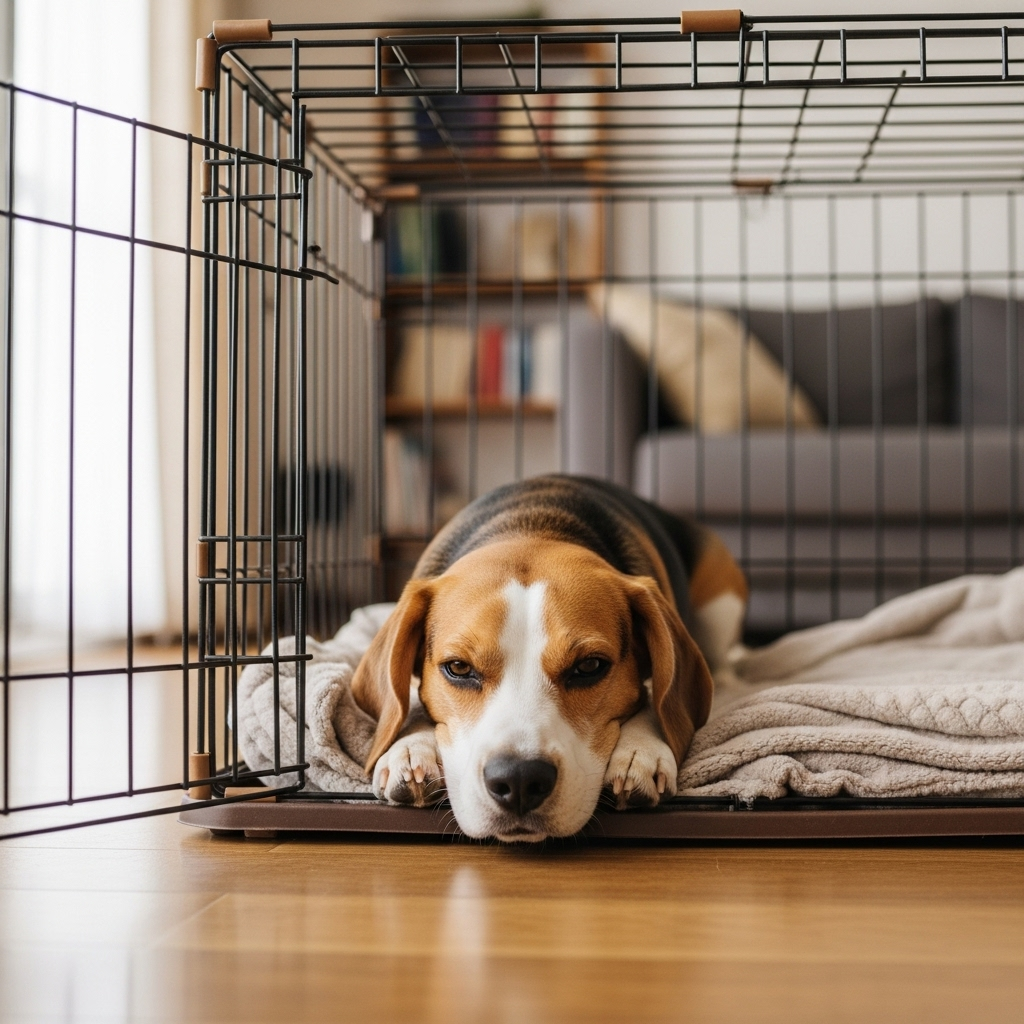
The image of a dog behind a locked door can be tough to swallow. In our Ottawa clinic, I often see clients hesitate, worried they’re “jailing” their new puppy. I get it. But the goal of crate training your dog is to reframe that image entirely, for both you and your pet.
My Experience in the Clinic: Changing Perspectives on Crates
I remember a client with a lovely but very anxious rescue Beagle named “Bagel.” Bagel would tear up cushions and scratch at the door whenever he was left alone. His owner was at her wits’ end. We talked about crate training your dog, and she was sceptical. We created a slow, gentle plan. A few weeks later, she came back beaming. She’d found Bagel napping peacefully in his open crate, a place he now saw as his own quiet room. That’s the power of doing it right.
The Modern Crate: A Den, Not a Cage
Dogs are den animals by nature. They instinctively seek out small, enclosed spaces where they feel safe and secure. A crate perfectly mimics this environment. Research in journals like Applied Animal Behaviour Science consistently shows that providing a covered, den-like enclosure can significantly reduce stress behaviours in dogs, especially during events like thunderstorms or fireworks. When you undertake crate training your dog, you aren’t confining them; you are giving them a personal bedroom where they can retreat and relax.
The 5 Essential Benefits of Crate Training Your Dog
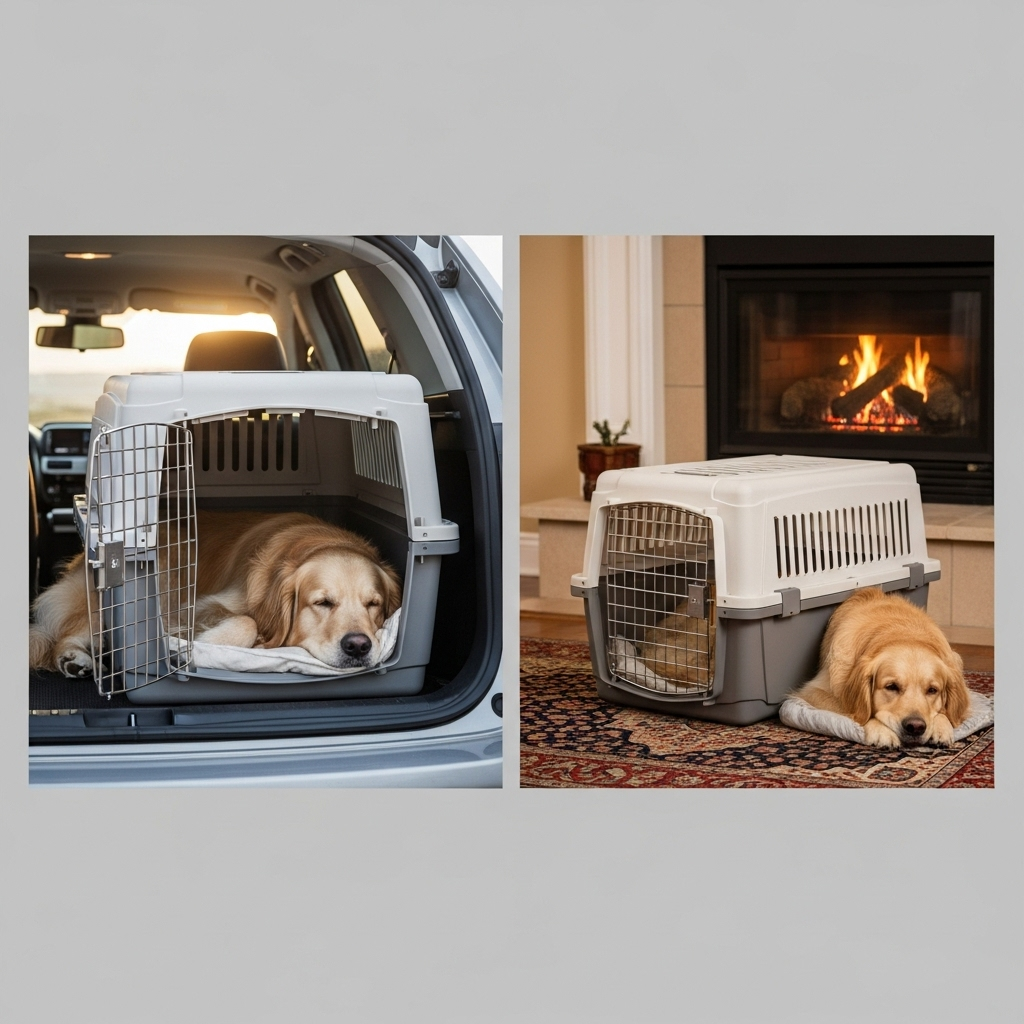
Beyond being a safe space, a crate is one of the most versatile management tools a pet owner has. The benefits extend far beyond puppyhood.
1. A Safe, Personal Space
Life can be overwhelming. A crate gives your dog a reliable escape from a boisterous family gathering, a scary vacuum cleaner, or just the daily household chaos. It’s a place that is exclusively theirs, where they know they won’t be bothered. This sense of security is fundamental to a well-adjusted dog.
2. Simplified Housetraining
One of the most immediate benefits of crate training your dog is how it helps with housetraining. As noted in the Merck Veterinary Manual’s guide on housetraining, dogs have an instinct not to soil their den. Using a crate prevents accidents when you can’t supervise them and helps them learn to hold it, making the potty training process faster and less messy for everyone.
3. Prevents Destructive Behaviour
A curious puppy or a bored adolescent dog can do a lot of damage—chewed shoes, shredded furniture, and even dangerous ingestion of foreign objects. A crate keeps them safely contained when you can’t have eyes on them. This is a core management principle found in foundational vet texts like Blackwell’s Five-Minute Veterinary Consult, which advises using confinement to prevent problem behaviours from developing in the first place. Crate training your dog protects your belongings and, more importantly, protects your dog from harm.
4. Safe and Calm Travel
Whether it’s a short trip to the vet or a cross-country move, a crate-trained dog is a safer traveller. A loose dog in a car is a dangerous distraction and is at high risk of injury in an accident. A crate keeps them secure. For air travel, it’s non-negotiable. When your dog already sees their crate as a familiar comfort zone, it dramatically reduces the stress of travel.
5. Peace of Mind During Recovery
This is the benefit you hope you never need, but will be incredibly grateful for if you do. As vets, we often prescribe “strict rest” after surgeries (like a spay or neuter) or for orthopaedic injuries. The Saunders Manual of Small Animal Practice emphasises that proper confinement is critical for healing. A dog that is already comfortable in a crate will experience far less stress during recovery, and owners have peace of mind knowing their pet is resting safely. Crate training your dog when they are healthy is a true act of proactive care.
Getting Started: How to Crate Train Your Dog the Right Way
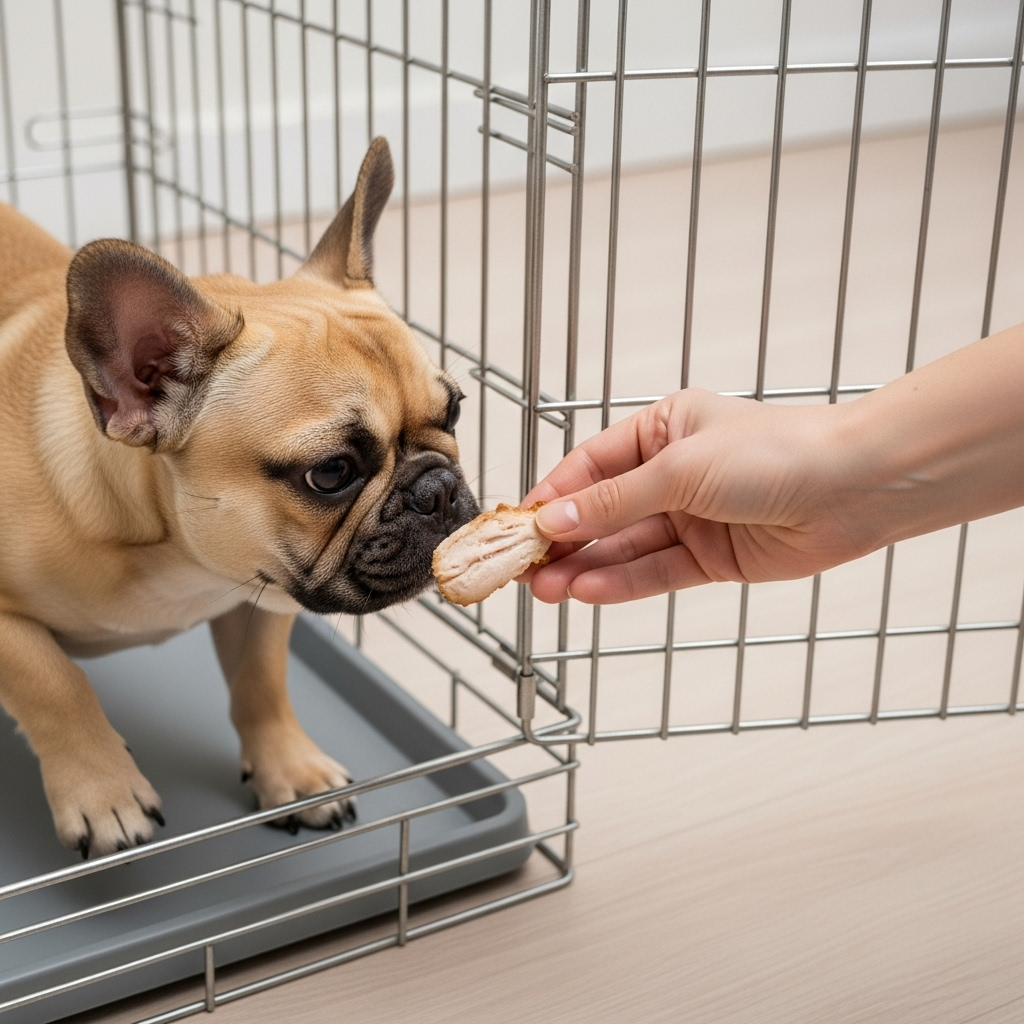
Success lies in patience and positivity. The goal is to have your dog walk into the crate willingly and see it as a fantastic place.
Choosing the Perfect Crate: Size and Style Matter
The crate should be large enough for your adult dog to stand up, turn around, and lie down comfortably, but not so large that they can use one end as a toilet and the other as a bed. For a puppy, look for a wire crate with a divider so you can expand it as they grow.
- Wire Crates: Excellent ventilation and visibility. Easy to clean and often foldable.
- Plastic Crates: More enclosed and “den-like.” Required for air travel.
- Soft-Sided Crates: Lightweight and portable, but only suitable for dogs who are already crate trained and aren’t chewers.
The Step-by-Step Crate Training Method
Move through these steps at your dog’s pace. If they seem stressed, go back a step.
Step 1: Making a Positive First Impression
Place the crate in a central area of your home, like the living room. Leave the door open. Make the inside inviting with a soft blanket or bed. Throughout the day, toss high-value treats (like small pieces of chicken or cheese) near the crate, then just inside the door, and finally all the way at the back. Don’t force them in. Let their curiosity win. Praise them excitedly for any interaction. This is the foundation of crate training your dog.
Step 2: Feeding Meals Inside the Crate
Start feeding your dog their regular meals inside the crate. At first, place the bowl just inside the door. As they get comfortable, move it further toward the back. Once they are happily stepping all the way in to eat, you can briefly close the door while they finish their meal, opening it right as they are done.
Step 3: Gradually Increasing Crate Time
Now, start associating a verbal cue like “Crate” or “Go to your house.” Toss a treat in, say your cue, and when they go in, give them a special chew toy that they only get in the crate (like a frozen Kong toy). Close the door and stay in the room for a few minutes, then let them out. Slowly extend the time they spend inside with their special toy.
Step 4: Practising with a Closed Door
Once your dog is comfortable for 10-15 minutes, you can start leaving the room for short periods. Then, try leaving the house for a few minutes. Keep your departures and arrivals calm and low-key to avoid creating anxiety. Consistent, positive sessions are key to crate training your dog successfully.
At-Home Checklist: Your 5-Minute Crate Training Starter Guide
| Task | Done? | Notes |
| Choose the Right Size & Type | ☐ | Big enough to stand/turn, but not to use as a toilet. |
| Make it Comfy | ☐ | Add a soft bed, blanket, and safe toys. |
| Introduce with High-Value Treats | ☐ | Toss treats inside; let the dog explore freely. |
| Feed All Meals in the Crate | ☐ | Start at the front, gradually move the bowl back. |
| Use a Crate-Only Special Toy | ☐ | A frozen Kong works wonders! |
| Keep it Positive, Always | ☐ | Never use the crate for punishment. |
What to Expect: The Typical Cost of Crates in Canada
The cost of a crate in Canada varies by size, material, and brand. This is a one-time investment that pays dividends in safety and peace of mind. Remember that crate training your dog is an affordable training solution.
| Crate Type | Small Dog (~15 lbs) | Medium Dog (~40 lbs) | Large Dog (~80 lbs) |
| Wire Crate | $50 – $90 | $80 – $140 | $120 – $200+ |
| Plastic Crate | $60 – $100 | $90 – $160 | $150 – $250+ |
| Soft-Sided Crate | $40 – $80 | $70 – $120 | N/A |
Prices are approximate and based on typical retail costs in Canadian dollars as of 2025.
Common Crate Training Problems and How to Solve Them
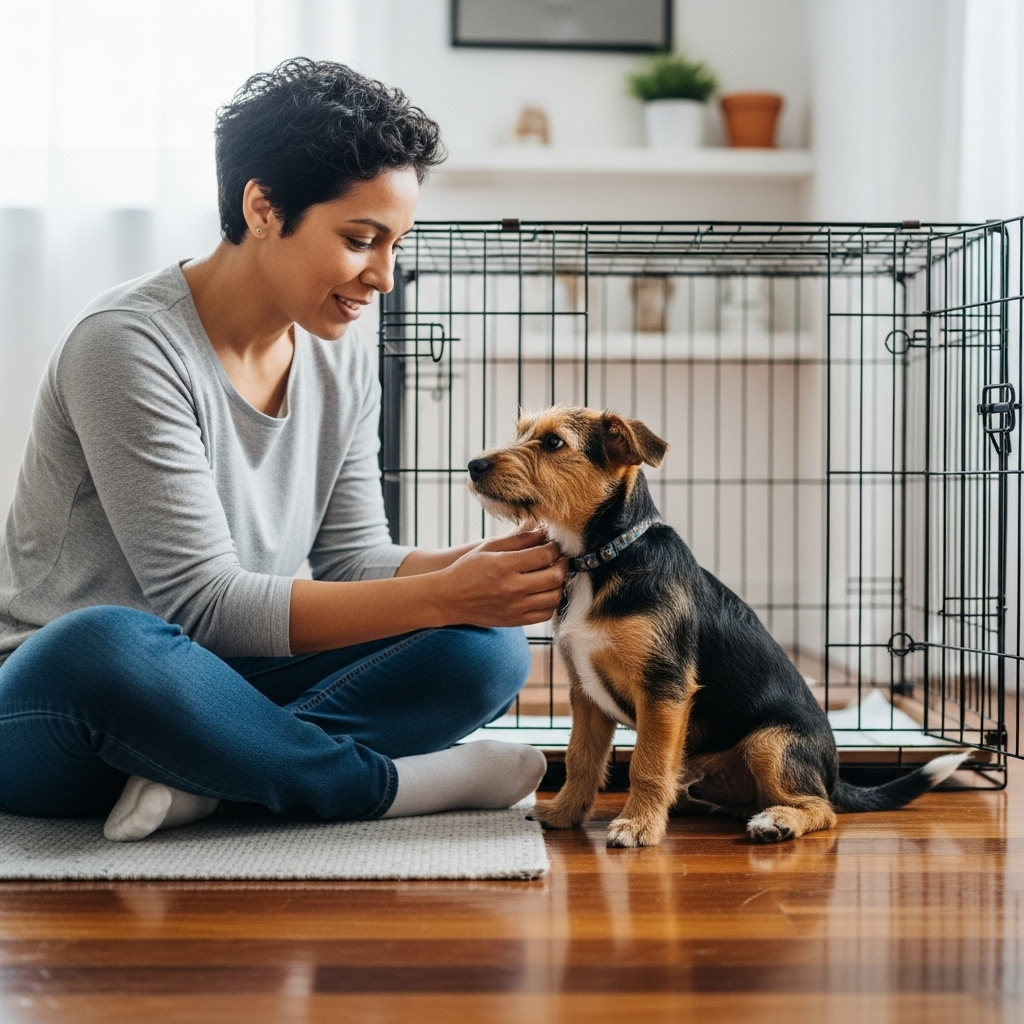
Even with the best plan, you might hit a snag. Don’t worry, this is normal when crate training your dog.
Whining and Crying
First, ensure your dog’s needs have been met (they’ve had a potty break, exercise, and water). If they start whining, try to ignore it. If you let them out when they cry, you teach them that whining gets them what they want. Wait for a brief moment of silence, then open the door. If the crying is frantic, you may have moved too fast. Go back to shorter durations.
Soiling the Crate
This could mean a few things: the crate is too big, they were left too long, or it could signal a medical issue like a urinary tract infection. Consult your vet to rule out health problems. Ensure the crate is the correct size and you are following a reasonable potty break schedule for their age (a puppy can typically hold it for their age in months plus one hour).
Crate Refusal or Fear
This almost always stems from a negative association. This is why it is critical to never use the crate for punishment. If your dog fears the crate, you need to rebuild trust from square one. This process of crate training your dog will take time. Make the crate a “treat machine” again, without even trying to close the door for a while.
People Also Ask: Your Crate Training FAQs Answered
How long can a dog stay in a crate?
This depends on their age, temperament, and training. Adult dogs can typically be crated for a standard workday (6-8 hours), provided they get adequate exercise before and after. Puppies under 6 months should not be left for more than 3-4 hours at a time. Never crate a dog for longer than they can comfortably hold their bladder.
Should I put a bed and toys in my dog’s crate?
Yes, you want it to be comfortable! Use a durable, chew-proof bed or soft blankets. Only provide toys that are safe to be left with an unsupervised dog, like a sturdy rubber chew toy. Avoid plush toys with squeakers or parts that can be ingested. The goal of crate training your dog is safety first.
Can I use the crate for punishment?
Absolutely not. This is the fastest way to make your dog hate their crate. The crate must always be a safe, positive sanctuary. Using it for punishment creates fear and anxiety, which can lead to more significant behavioural problems. This is a core principle endorsed by organisations like the Canadian Veterinary Medical Association through their responsible pet ownership guidelines.
When is it too late to start crate training a dog?
It’s never too late! While crate training your dog is often easiest with a puppy, adult dogs and even seniors can learn to love their crate. The process may just take more time and patience, especially if they have a previous negative association. The principles of positive reinforcement remain the same.
(Image Placeholder 3)
ALT Text: An adult dog resting comfortably, demonstrating the long-term success of properly crate training your dog.
A Final Thought from Your Ottawa Vet
Crate training your dog is a journey, not a race. There will be good days and maybe a few frustrating ones, and that’s perfectly okay. Remember that you are giving your companion a valuable life skill, the ability to feel secure on their own. You’re providing a tool that keeps them safe during travel, protects them from household dangers, and offers them a quiet retreat from the world. By leading with patience and kindness, you aren’t just training your dog; you’re deepening the trust and understanding you share, building a foundation for a happy, well-adjusted life together.

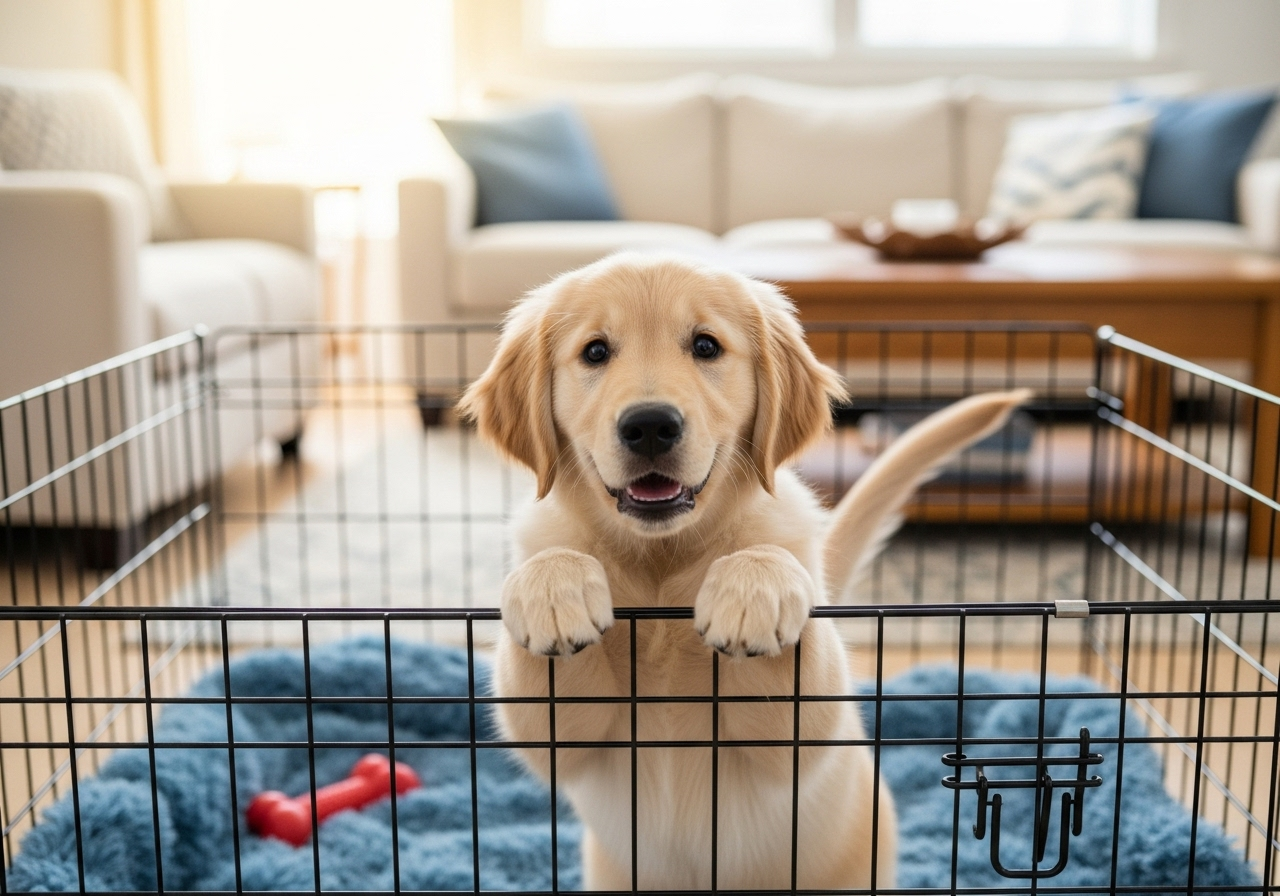
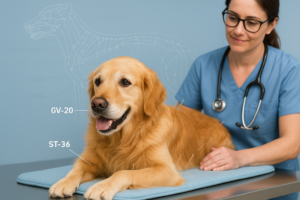
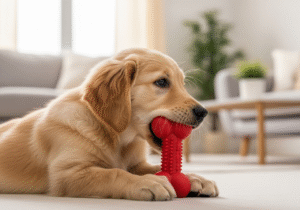
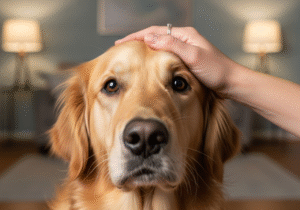
Pingback: Why Dogs Tilt Their Heads: 5 Proven Reasons Revealed